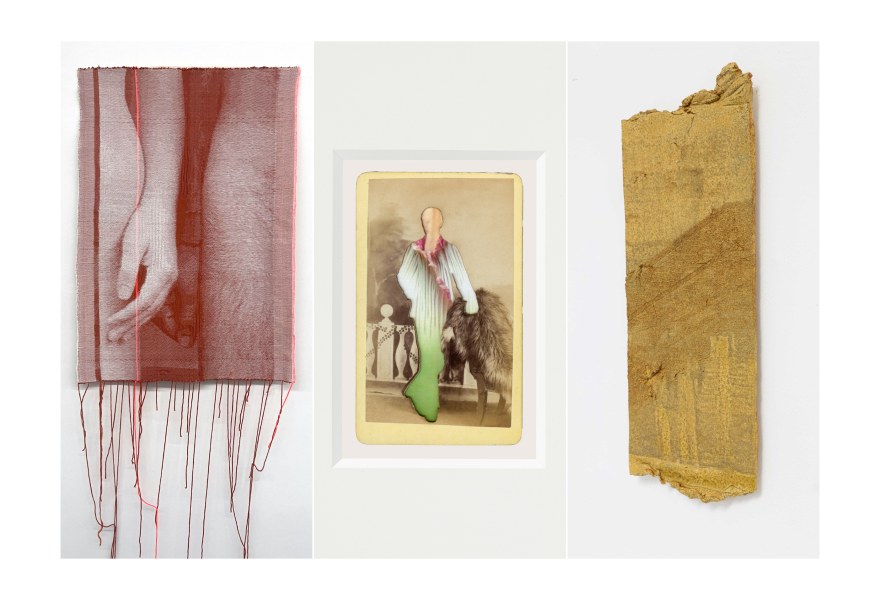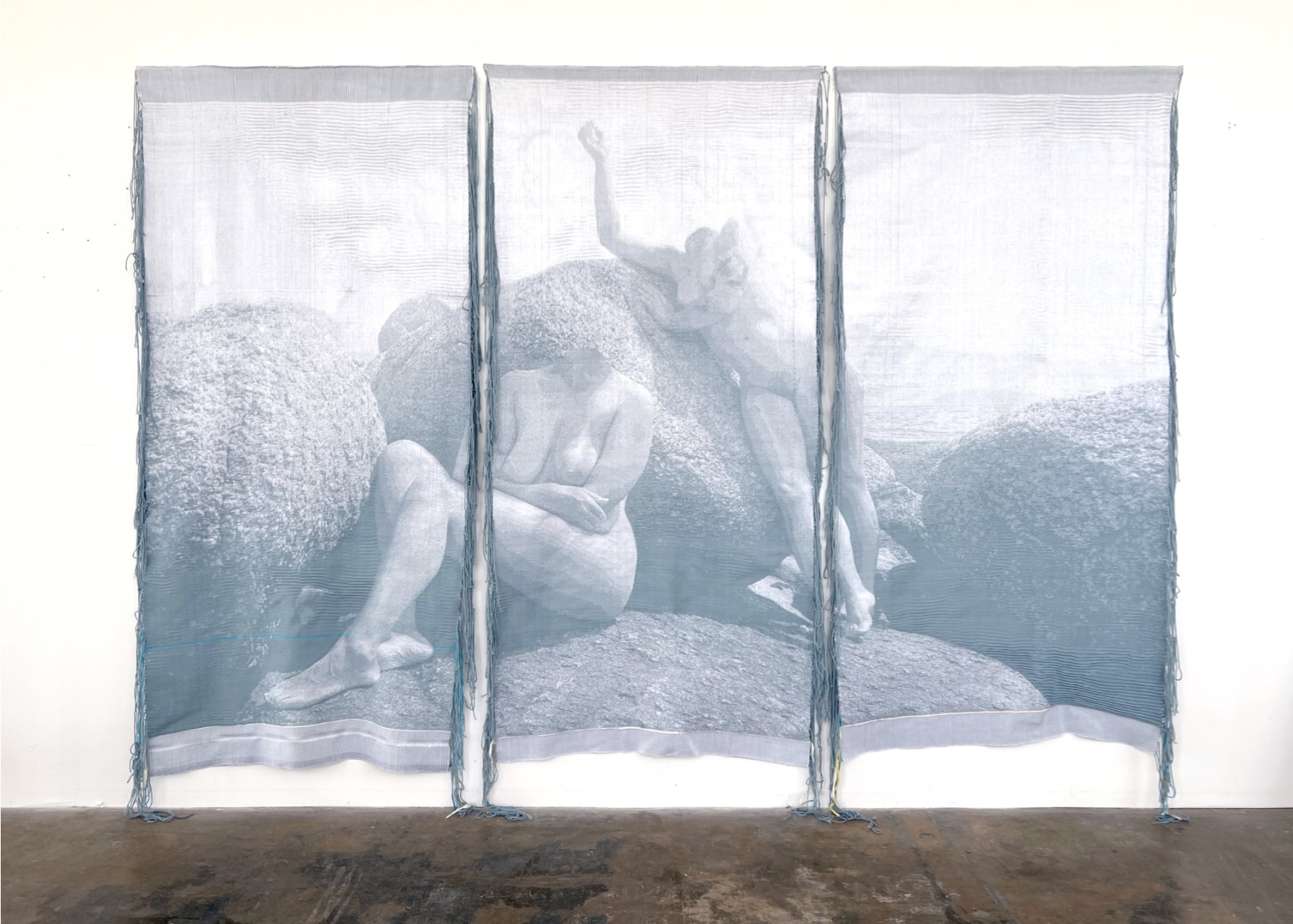17 september 2024, Flor Linckens
3x surprising uses of material at Unseen
From 20-22 September, Unseen Photo Fair will return to the iconic Gashouder in Amsterdam. On GalleryViewer, we highlight three artists who combine photography with secondary materials in innovative and intriguing ways. These artists explore themes such as identity, nature and self-representation by connecting photography with elements like clay from the Rhône, 19th-century cartes de visite and handwoven tapestries.
Tanja Engelberts | Galerie Caroline O'Breen
Galerie Caroline O’Breen presents "Dead River" by Tanja Engelberts at Unseen, alongside works by Mounir Raji and Misha de Ridder. In her practice, Engelberts examines how to capture landscapes that are no longer visible, focusing on landscapes that are shaped by our fossil fuel production and the long-term processes that we've — both intentionally and unintentionally — set in motion. For "Dead River", the Dutch artist explores the impact of industrial pollution on the Rhône, a river declared ‘dead’ in the 1950s due to industrial developments along its banks, including nuclear plants and chemical factories. Engelberts imagines the river as a living entity, experiencing the changes caused by human intervention. She combines photography, film, sound and material experiments to capture the interplay between water and shore. By incorporating a clay-like substance that she found along the riverbank into these works, she ingeniously merges material and subject. These poetic works visualise both the beauty and pollution of the landscape.
Open Doors Gallery presents the work of London-based Spanish artist Javier Hirschfeld Moreno. In his "Profile" series, Moreno explores the relationship between historical portraiture and modern self-representation on digital platforms such as Tinder and Grindr. He combines his fascination with art history with his research into queer identity, visibility and the influence of surveillance capitalism. In "Profile", the artist uses original 19th-century cartes de visite: small portrait photographs that were popular in the 1860s as calling cards and effectively a means of self-representation. He then reworks these historical photos using a laser-cutting method, adding new landscape imagery — a reference to how ‘discreet users’ on queer dating apps use landscape images instead of portraits, possibly as a means of ensuring safety. By comparing 19th-century cartes de visite with contemporary dating profiles, Moreno shows how our self-presentation spans both historical and digital dimensions. His work challenges viewers to reflect on how identities are formed and archived in an increasingly digitised world.
American artist Mia Weiner will exhibit a series of handwoven tapestries at Unseen in the booth of Homecoming Gallery, depicting intimate scenes that explore themes of identity, gender and human relationships. Weiner’s practice is strongly connected to photography, as her tapestries are based on photographs she took herself. These images are digitally altered before being carefully handwoven, sometimes with elements like body parts removed or objects added. Weiner’s work not only examines classical portraiture traditions but also considers how the female form has been represented throughout history. By combining digital manipulation with hand weaving, Weiner plays with the tension between visibility and power, imbuing the bodies she portrays with agency and strength. Her work bridges the gap between classical figuration and contemporary questions of representation, inviting viewers to reflect on how bodies are depicted in art.



